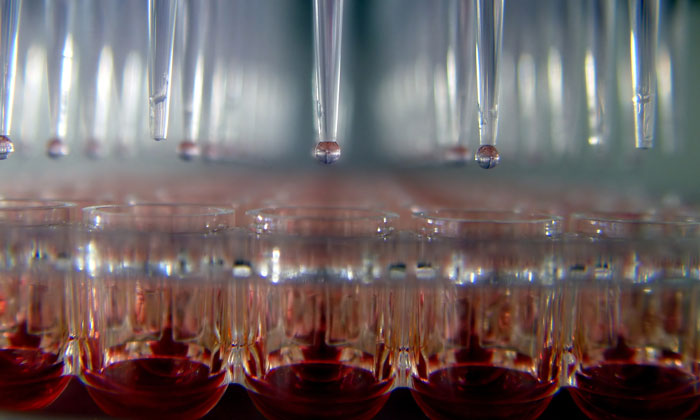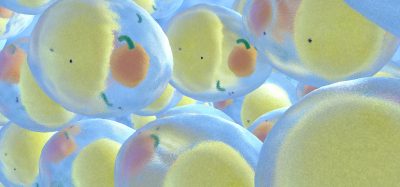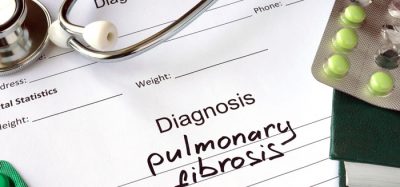Addressing increasingly resistant drugs by infectious agents
Posted: 4 September 2023 | Akintayo David Ololade (University of Abuja) | No comments yet
Infectious agents’ drug resistance is a complex challenge affecting survival. Understanding their mechanisms in vectors, the potential of plant-derived treatments, and roles of nucleic acids and biochemical compounds is crucial for effective therapy, requiring collaborative international research through the One Health Initiative.


There have been several studies that have reported the ability of infectious disease agents to be drug resistant. Infectious agents’ resistance was described at the European Union Research Parliament “as a widespread, multifaceted phenomenon that affects both living things and the environment, as well as their capacity to survive in the presence of drugs intended to either kill or inactivate them.” Infectious agent includes bacteria, virus, fungi, and parasites, and they are capable of causing disease in a living organism. They could be spread by physical contact, airborne, waterborne, foodborne, or vector-borne.1
Research questions:
- How are infectious agents able to survive in the vector but infect their host?
- Studies had shown several plant species contain efficacious substances against certain infectious agents.
- What are the roles of nucleic acid in the survival of parasites?
- What is the role of biochemical substances produced by several species? It is common knowledge that certain parasites cannot survive inside some hosts.
Specific examples:
- In the African Trypanosmome, the variable surface glycoprotein enables the parasite, to escape the host’s immune reaction and research could help us understand the biological processes.
- Studies have shown that targeting some expression gene sites could lead to the production of new drugs as indicated. Aurachin D, an inhibitor was isolated from the bacterium Stigmatella aurantiaca strain Sg a15 and reported to have inhibitory activities against the African trypanosome.13,15
- Methyl blue dye has been reported to kill the plasmodium parasite with no health implications except colour urine (blue), and we could test the efficacy of this with other parasites.
- A study on the role of nucleic acid and interaction will enable scientists to understand how to effectively combat the ability of infectious agent drug resistant (pfmdr1 and chromosomes and may play an important role in drug resistance to the plasmodium parasite).7,13
- The use of Plants extract is important in drug discovery. During a study on the prevalence of Porcine Cysticercosis at Ibadan, it was discovered that local farmers made use of specific plants to address infectious diseases in pigs.11
- A report of farmers using sniper to preserve beans which causes serious health hazards. We were part of a team that studies the efficacy of garlic (Allium sativum) against the Cowpea Weevil Callosobrocus maculatus. We discovered it is highly effective and environmentally friendly. I had earlier proposed the use of Palmatine and Silver Nitrate in the efficacy against the RNA structure of the COVID-19 virus.12
- Biochemical substances have great potential for drug discovery. Several studies have reported that iron storage plays an active role in the survival of Toxoplasma gondii. Also, scientists had reported the efficacy of probiotics in the survival of the Host: reducing infectious agents, and aiding the exponential growth of the aquatic organism.10
- Reported cAMP as the second messenger signalling molecule conserved from bacteria to humans and modulates several biological processes, including protein expression, gene transcription, and cell development and differentiation.
Approach and method to drug discovery
High-throughput screening (HTS) of compound libraries using whole-cell assays as a well-established approach for drug discovery programmes in neglected diseases. This kind of assay normally relies on a simple pathogen viability readout. In this assay, active compounds are discovered under physiologically relevant conditions.5
The resazurin assay is used for drug discovery and it accepts electrons from free radicals and the electron transport chain within the inner mitochondrial membrane, generating reactive oxygen species (ROS) and interfering with energy homeostasis.5
Cytology-based profiling can facilitate antibiotic discovery efforts and, these assays assess cell cycle progression, nuclear and mitochondrial DNA content, mitochondrial DNA replication, nuclear DNA damage, mitochondrial membrane potential, and lysosome structure and function.8
CRISPR-Cas9: This technology has been developing rapidly over the years for its efficient marker-free gene editing and is based on an RNA-guided enzyme, nuclease Cas9, bound by a short guide RNA (sgRNA), which provides sequence specificity.2,16
Metabolic Control Analysis (MCA) and metabolic modelling: Metabolic pathway has been proposed as a pathway for an inhibitors agent against parasites.14 Whole-cell assay: This has been reported as a pathway for inhibitor agents against parasites.17
Drug target site
Kinase targets have been addressed by the pharmaceutical industry and offer the potential for the development of new drugs in several therapeutic areas with kinases and/or phosphatases according to this report.5
Ubiquitin-proteasome pathway (UPP): ubiquitin ligases and deubiquitinase (DUBS) have received attention as potential drug targets according to reports.7 Reported cysteine proteases (rhodesain), protein kinase GSK3 (TbGSK3), N-myristoyl transferase (TbNMT), glycolytic enzyme phosphofructokinase (PFK) and Methionyl-tRNA synthetase (TbMetRS) as a potential drug target.4
The heat shock protein (HSP) are produced by the cells in response to exposure and stressful condition, infection, inflammation, or exposure to cell toxin serves as a chaperone for other proteins that could serve as a potential drug target.3
Sirtuins are a family of seven protein that play a role in aging by controlling cellular health (all activities in the cell) and function in the presence of NAD+. The basic role of sirtuins is that they remove acetyl groups from other proteins and they could be a potential drug target.7,9
Dihydrofolate reductase-thymidylate synthase (DHFR) have been successfully exploited for the therapy of bacterial infections and other parasitic diseases such as malaria.13
Discussion:
To address infectious agents’ drug resistance, scientists have to be able to answer the research questions stated above. Using the One Health Initiative, we should engage in synergy research across countries and continent and exploits local understanding of local beliefs and myth. International research and symposium help to understand and combat regional challenges.
Plants are not well exploited for the treatment of infectious agents, and inter-species biochemical processes and infectious agents habitat interaction are not well studied. Vectors of infectious disease agents are not infected with the diseases despite being a primary carrier and I believe that is important to understand the biology. Scientists could screen animals’ biochemical compounds to understand the biochemical composition, In other terms, snake venoms could aid the treatment of infectious diseases.
Author Bio:


Akintayo David is an early career researcher (parasitology) and has four years experience in the NGO sector. He has over two years of experience in research and laboratory work.
References:
- Antunes Luisa (2023). Tackling antimicrobial resistance: From science to pharmaceuticals policy, European Parliamentary Research Service, Scientific Foresight Unit (STOA). PE 740.238
- Bryant, M. J., Sebastian, B., Lucy, G., Sebastian, H. and Najma, R. (2019): CRISPR in Parasitology: Not Exactly Cut and Dried! Trends in Parasitology. (35): 6. doi.org/10.1016/j.pt.2019.03.004
- Carlos, J. P., Tanya, H., Guillermo, S., Amy, K. W., Claire, M., Neil, R. N., Michael, A. J. F., Paul, G. W., Ian, H. G. and Raymond, H. (2013): Exploring the Trypanosoma brucei Hsp83 Potential as a Target for Structure Guided Drug Design, PLOS Neglected Tropical disease. 7(10): e2492. doi:10.1371/journal.pntd.0002492
- Cláudia, J. G. M., Adriana, T., Taffare, T. and Marcelo, S. S. (2019): Trypanosoma brucei Interaction with Host: Mechanism of VSG Release as Target for Drug Discovery for African Trypanosomiasis, International journal of molecular sciences. (20):1484. Doi: 10.3390/ijms20061484
- Faria, J., Carolina, B.M., Rita, S., Bruno, S., Pascoalino, N. L., Jair, L.S.N., Deu, J.M.C., Tanya, P., Jean, R.I., Anabela, C.D, and Lucio, H.F.J (2014); Drug Discovery for Human African Trypanosomiasis: Identification of Novel Scaffolds by the Newly Developed HTS SYBR Green Assay for Trypanosoma brucei, Journal of Biomolecular Screening, Vol. 20(1) 70–81. DOI: 10.1177/1087057114556236
- Gerard, D. and Wolfgang, H. (2019): Biological plasticity rescues target activity in CRISPR knockouts, Nature Methods. Doi.org/10.1038/s41592-019-0614-5
- Ishita, G., Suruchi, A., Kanika, S., Amit, Y. and Sameena, K. (2018): Ubiquitin Proteasome pathway proteins as potential drug targets in parasite Trypanosoma cruzi, Scientific Reports. (8):8399. DOI: 10.1038/s41598-018-26532-z
- James, A. T., Nicola, B., Sebastian, H., Caia, D., Anna, T., Lucy, G. and Sam, A.ID. H. (2018): Insights into antitrypanosomal drug mode-of action from cytology-based profiling, PLOS Neglected Tropical disease. 12(11): e0006980.
- Luís, G., Terry, K. S., Nilmar, S. M., Sergio, S. and Anabela, C. S. (2018): Silent Information Regulator 2 from Trypanosoma cruzi is a potential target to infection control, IntechOpen. doi.org/10.5772/intechopen.770301
- Mark, C. F., David, H., Alan, H. F., Michael, A. J. F., David, W. G., Kevin, D. R., Manu, D. R., Leah, S. T., Paul, G. W., Susan, W. and Ian, H. G. (2017): Antitrypanosomatid drug discovery: an ongoing challenge and a continuing need, Nature Review Microbiology, 15(4): 217–231. doi:10.1038/nrmicro.2016.193.
- Ololade, A. D., Olanrewaju, C. A. and Malann, Y. D. (2022). Risk Factors and Prevalence of Porcine Cysticercosis and Epilepsy Survey among Humans in Ibadan, Oyo State, Nigeria Journal of Parasitology. https://dx.doi.org/10.4314/njpar.v43i1.12
- Ojewale Kayode (2018). Deadly sniper-treated beans: Matters arising, TheGuardian. Access on: 29th June 2023, Access at: https://guardian.ng/opinion/deadly-sniper-treated-beans-matters-arising/
- Robert, T. J., Bakela, N. and Margaret, A. P. (2011): State of the Art in African Trypanosome Drug Discovery, Current topic of medical chemistry. 11(10):1255-1274
- Saavedra, E., Zabdi, G. C., Rafael, M. S. and Paul, A. M. M. (2018): Drug Target Selection for Trypanosoma cruzi Metabolism by Metabolic Control Analysis and Kinetic Modeling, Current medicinal chemistry (25): 1-19
- Stefanie, k. M., Lindsay, b. T., Gordon, J. F., and Terry, k. S. (2016): The trypanosome alternative oxidase: a potential drug target? Cambridge. doi.org/10.1017/S0031182016002109
- Smith, H. A., Frederik, Z., Gerard, J., Nico, Z., William, F. M., Sandra, C. M., Dirk, E., Maria, F. S., Paola, G., Petra, J., Anne, M. M., Hanice, S., Karen, T., Tilmann, B., Marcus, B., Lars, M. S., Gerard, D. and Wolfgang, H. (2019): Biological plasticity rescues target activity in CRISPR knockouts, Nature Methods. Doi.org/10.1038/s41592-019-0614-5
- Wenzler, T., Gabriela, S. B., Remo, S. S., Pascal, M., Andreas, B., Isabel, R. and Reto, B. (2015): A new approach to chemotherapy: drug-induced differentiation kills African trypanosomes, Scientific Report. (6):22451. DOI: 10.1038/srep22451
Related topics
Drug Delivery, Drug Development, Drug Discovery, Drug Targets, Targets
Related organisations
European Union Research Parliament, University of Abuja
Related people
Akintayo David Ololade (University of Abuja)








